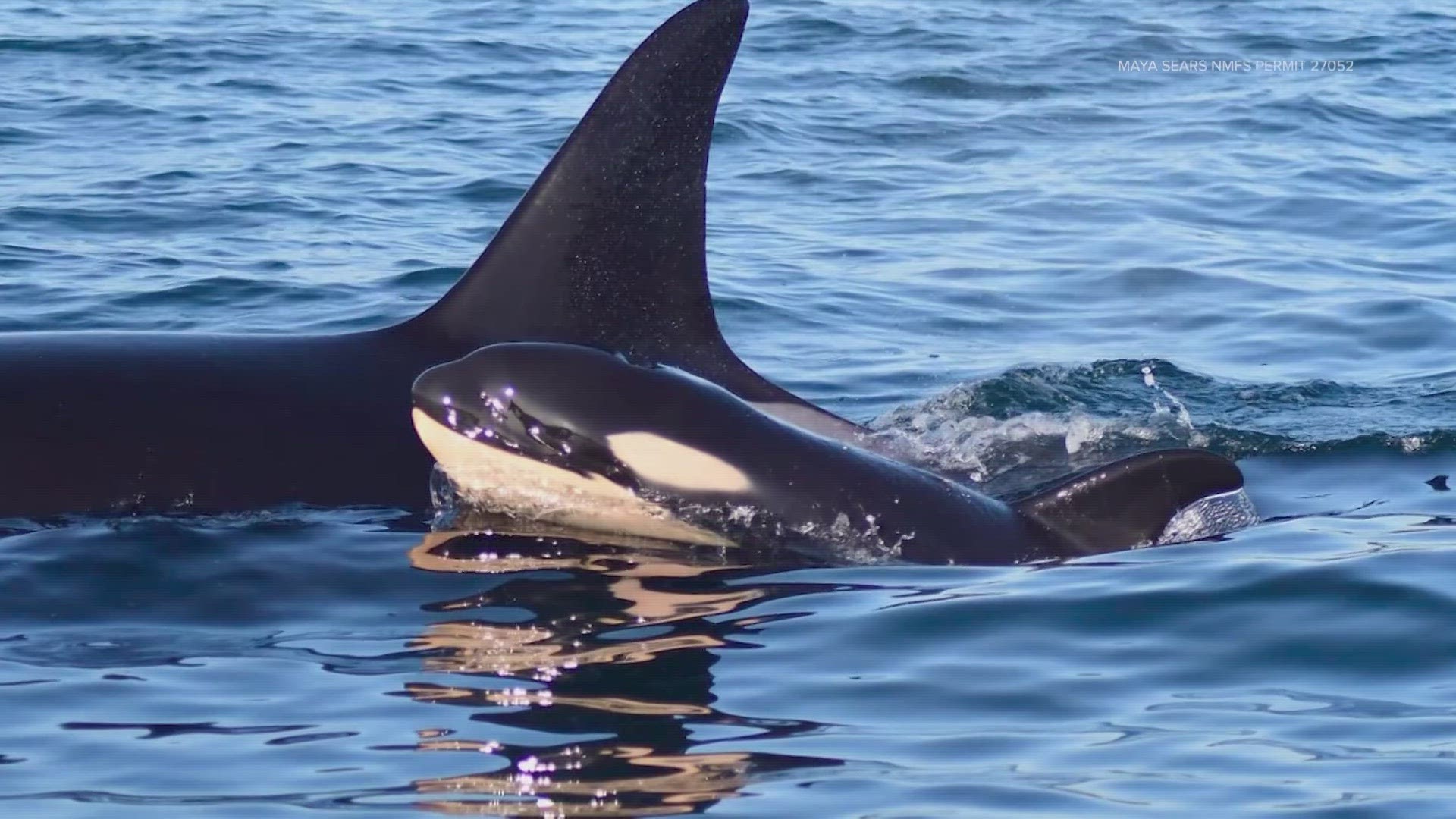SEATTLE — There appears to be a new orca calf in the J Pod, according to the Center for Whale Research.
The Center for Whale Research said it received reports and photos of a new calf with the J Pod on Tuesday from Puget Sound killer whale researchers, and father-daughter duo, Maya and Mark Sears.
The calf was not seen in encounters before Tuesday, meaning the calf is just a few days old. The researchers said the calf remained near adult female J40 and believe J40 is the most likely mother, but it is not confirmed.
J40 is a 19-year-old female, and this would be her first calf, according to The Whale Trail founder and director Donna Sandstrom.
"Newborn orcas are there a really distinctive peachy color, and it stays that way for a couple of weeks, so that caught their attention," Sandstrom said of the Sears' discovery.
She added, "Mark said the calf looked really healthy. He said it looked like it was trying to tail-slap. It was practicing tail slapping, which is just, so wonderful."
The calf's sex is unknown at this time.
"We hope to see lots more of this calf in the coming weeks and months, and that both the calf and its mother will be able to thrive," the Center for Whale Research said in its Facebook post.
In 2022, the J Pod welcomed a girl, known as J59. She was the first calf born into J Pod since September 2020, when J41 gave birth to J58.
RELATED: Meet the whole J pod
If this new calf survives, it would bring the Southern Resident population to 77, according to data from the nonprofit Orca Conservancy. The Southern Residents are made up of the J, K and L pods.
The calf's birth would raise the J Pod's population to 26, according to the Orca Conservancy's data. It also brings the number of Southern Resident calves under five years old to 10 total.
Southern Resident orcas have faced a challenging plight, as their food supply of Chinook salmon has dwindled, and they have been impacted by pollution and boat noise, which hurts their ability to hunt.
"One of the problems this population has had, is some pods — especially K Pod — has had a hard time even getting pregnant, or having pregnancies come to fruition. So anytime there's a successful birth of a calf, everyone rejoices," Sandstrom said.
Sandstrom said she believes the time is now to do everything we can to protect these mammals.
She helped to get new legislation passed, to go into effect in 2025, that will require recreational boaters to stay away from the whales at triple the distance than current law.
Sandstrom said that the first year of life for a calf is often "very precarious," and that the survival rate is not high, so it is important that boaters give the whales lots of distance.
"I am a little concerned with a new calf and the population. People are very tempted to go get photos of that adorable baby," Sandstrom said. "That's the wrong thing to do. Give them 1,000 yards away, and give that baby and its mom a chance to survive."

